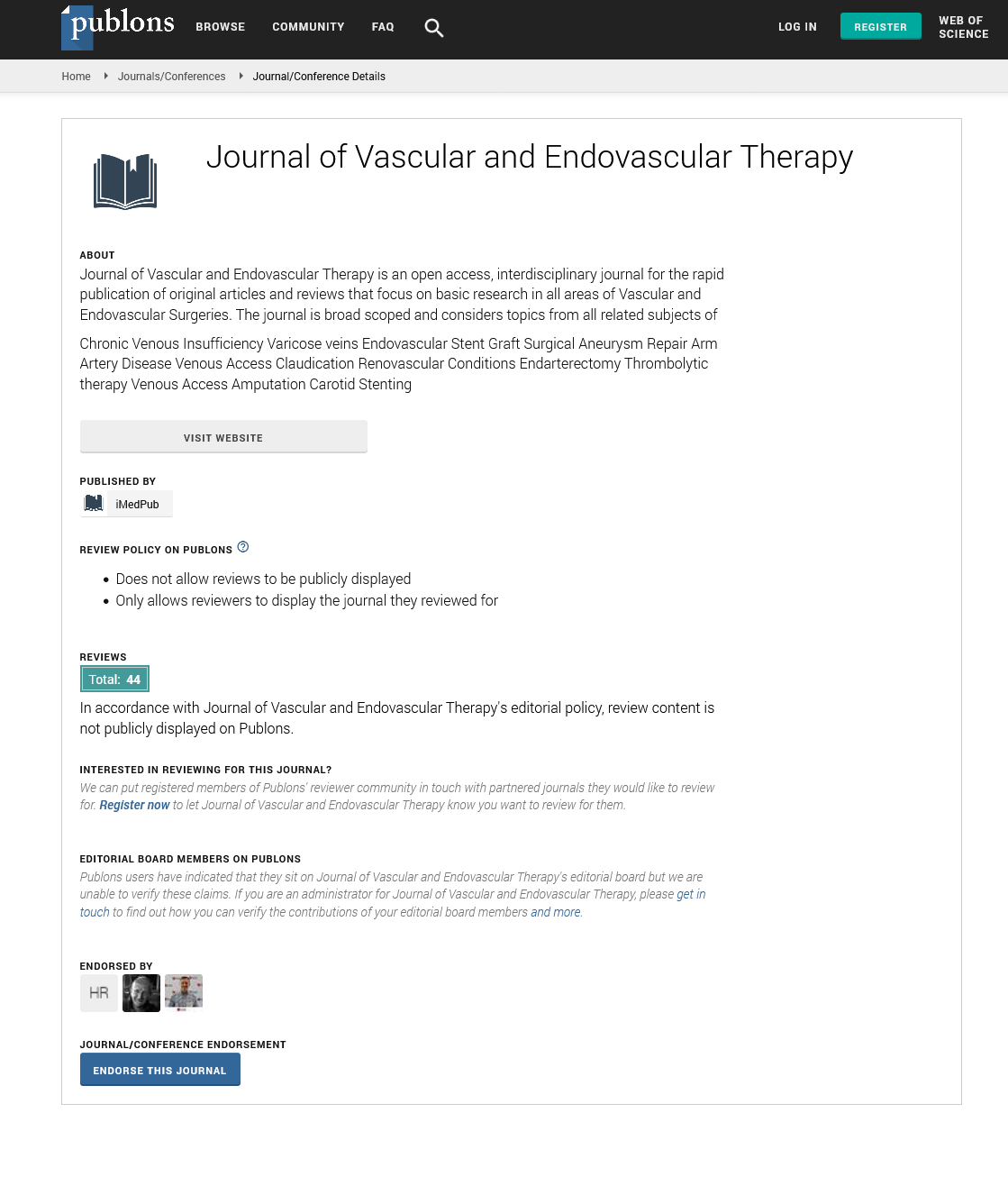Femoral Tunneled Hemodialysis Catheter as a permanent access for hemodialysis patients
3rd Edition of World Congress & Exhibition on Vascular Surgery
May 24-25, 2018 London, UK
Herzallah AM
Matarya Teaching Hospital, Egypt.
Posters & Accepted Abstracts: J Vasc Endovasc Therapy
DOI: 10.21767/2573-4482-C1-003
Abstract
Objective: to evaluate the efficiency of the hemodialysis catheter in the femoral tunnel as durable access for patients with hemodialysis. Introduction: Vascular access (VA) continues to be the keystone in cases requiring hemodialysis (HD). When the choices of arterial venous fistula, grafts, and thoracic central catheters are depleted, the case’s life becomes at risk. The extra options are limited to transplantation, peritoneal dialysis, insertion of the trans lumbar and femoral catheter. The Last may, in lots of cases, be the best choice. We present our experience at the Matarya Teaching Hospital with 17 cases where all vascular accesses was depleted and no transplant or peritoneal dialysis could be performed. Therefore, we chose the femoral tunnel catheter (FTC) as VA durable and unique. The median follow-up period was 10 months (2-14 months). The median age of cases was 55 (40-70) years. In ten cases, a Permcath (Hickman access system, BARD) and the other seven are inserted (DURAFLOW, from AngioDynamics). All cases received warfarin after passing LMWH to prevent thrombosis of the catheter. All catheters were functional for 2 months. The mean blood flow was 230 ml / min (200-260 ml / min). Two cases died at 5 and 12 months respectively with a functional catheter due to causes not directly related to the FTC. In a patient, the site of the catheter was changed to 5 months due to an accidental catheter slipping. A catheter has been changed because the flow has become inadequate after 8 months. No patient had deep vein thrombosis. In one patient, the catheter was operated for 14 months after insertion. We conclude that the femoral catheter in the tunnel is a stable option in cases with depleted VA.
Recent Publications 1. Pervez A, Zaman F, Aslam A, et al. Port catheter placement by nephrologists in an interventional nephrology training program. Semin Dial 2004; 71:61-4. 2. Mermel LA. Prevention of intravascular catheterrelated infection. Ann Intern Med 2000; 132:391-402. [PUBMED] [FULLTEXT] 3. Daniel T, Murai MD. Are femoral broviac catheters effective and safe? A prospective comparison of femoral and jugular boviac catheters in newborn infants. Chest 2002; 121:1527-30. 4. Pierco CM, Wade A, Moke Q, et al. Heparin-bonded central venous lines reduce thrombotic and infective complications in critically ill children. Intensive Care Med 2000; 26:967-72. 5. Joynt GM, Kew J, Gomersall CD, et al. Deep venous thrombosis caused by femoral venous catheters in critically ill adult patients. Chest 2000; 117:178-83. [PUBMED] [FULLTEXT].
Biography
Assem is a junior cosultant vascular surgeon in Matarya Teaching Hospital; Cairo; Egypt.one of the big vascular centres in Egypt. He has a fair experience in both open and endovascular procedures.MSC.MRCS. & M.D.
Email:assemherz010@hotmail.com
Google Scholar citation report
Citations : 177
Journal of Vascular and Endovascular Therapy received 177 citations as per Google Scholar report
Journal of Vascular and Endovascular Therapy peer review process verified at publons
Abstracted/Indexed in
- Google Scholar
- Publons
- Geneva Foundation for Medical Education and Research
- Secret Search Engine Labs
Open Access Journals
- Aquaculture & Veterinary Science
- Chemistry & Chemical Sciences
- Clinical Sciences
- Engineering
- General Science
- Genetics & Molecular Biology
- Health Care & Nursing
- Immunology & Microbiology
- Materials Science
- Mathematics & Physics
- Medical Sciences
- Neurology & Psychiatry
- Oncology & Cancer Science
- Pharmaceutical Sciences


